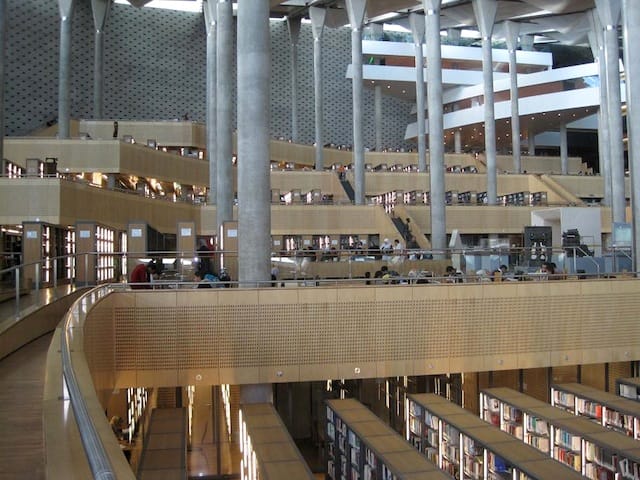The New Baghdad Library Looks Suspiciously Familiar
Centuries before the British Mandate and the Butcher of Baghdad, today's ravaged Iraqi capital was thriving as the largest city in the world. According to The Art Newspaper, a new master plan spearheaded by the Iraqi Ministry of Youth and Sport is aiming to tap into this historical legacy with some

Centuries before the British Mandate and the Butcher of Baghdad, today’s ravaged Iraqi capital was thriving as the largest city in the world. According to The Art Newspaper, a new master plan spearheaded by the Iraqi Ministry of Youth and Sport is aiming to tap into this historical legacy with some significant new developments, including a three-million-book Baghdad Library designed by the London firm AMBS Architects.
The library, which will be the first to be constructed in Baghdad since the 1970s, is in and of itself a brilliant project. The thing is, its design looks eerily familiar — from the teardrop shape protruding into a body of water down to the literal writing on the walls, which feature samples of early Mesopotamian cuneiform. Many of the structure’s widely touted elements are dead ringers for the Snøhetta-designed Bibliotheca Alexandrina in Egypt. The Norwegian firm, which had initially won a 1988 international competition organized by UNESCO for their design, ended up receiving significant attention for the project after it was completed in 2002, winning the Aga Khan Award and plaudits from the Smithsonian, New Yorker, and Architecture magazines.

The Bibliotheca Alexandrina was a high-visibility project in the Arab and Mediterranean world, and rightly so — the design drew from the nature of the site and its history, and the project itself was a glimmer of enlightenment during the bleak decades of Mubarak’s dictatorship. It might be an exaggeration to suggest that AMBS copied or otherwise plagiarized Snøhetta’s design for their Baghdad Library, but as simple coincidence, the similarities beggar belief (feel free to compare the Alexandria and Baghdad libraries and decide for yourself). Snøhetta’s aesthetic perhaps contributed significantly to driving a consensus in this narrow genus of institutional architecture, but if this a harbinger of things to come, the entire region is all the poorer for it. The last thing Iraq and the broader Middle East need is an aesthetic clusterbombing of master-planned “cultural revival” compounds, designed at great expense by de rigeur European firms yet fundamentally derivative and culturally sterile.




